
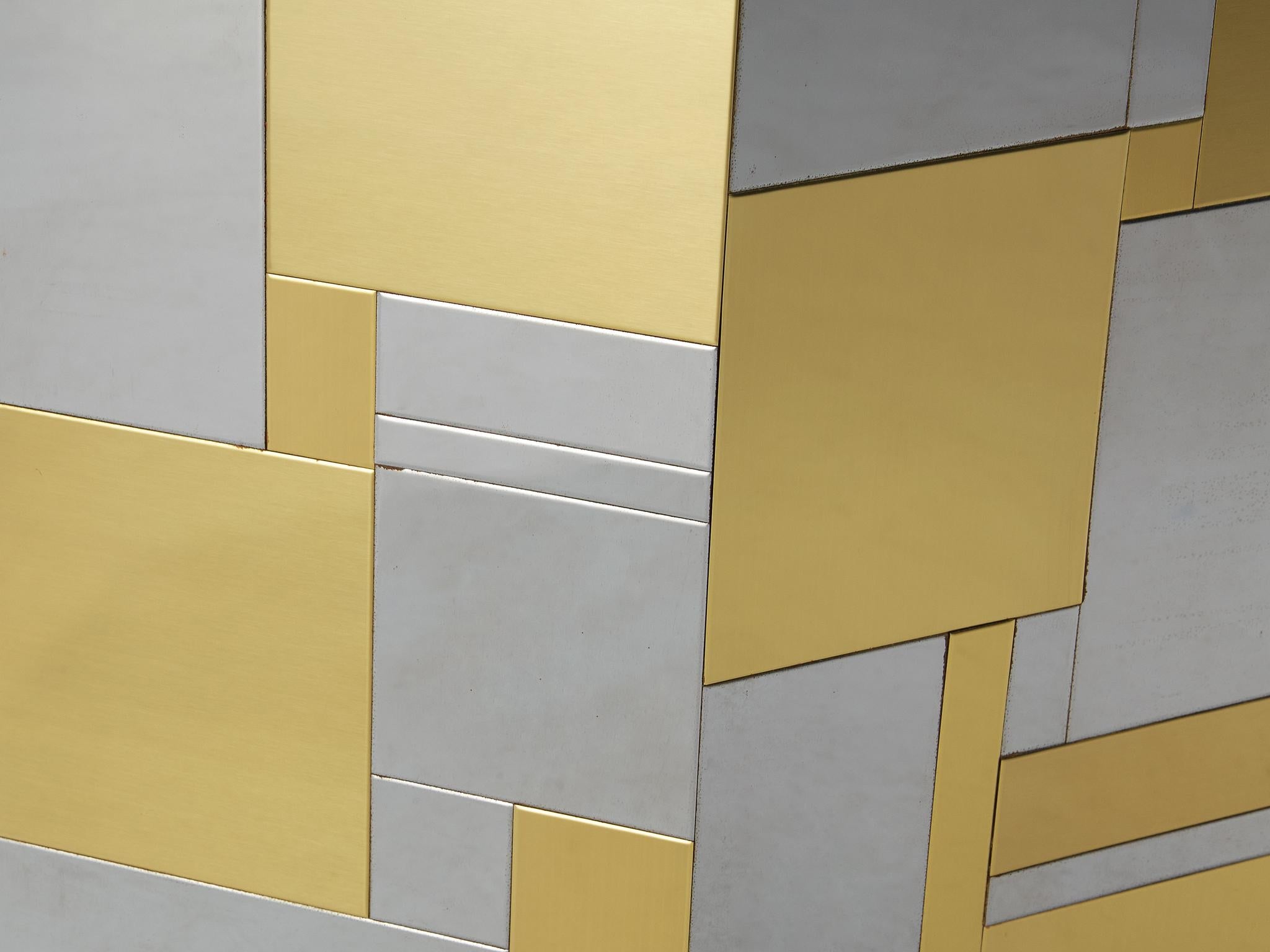
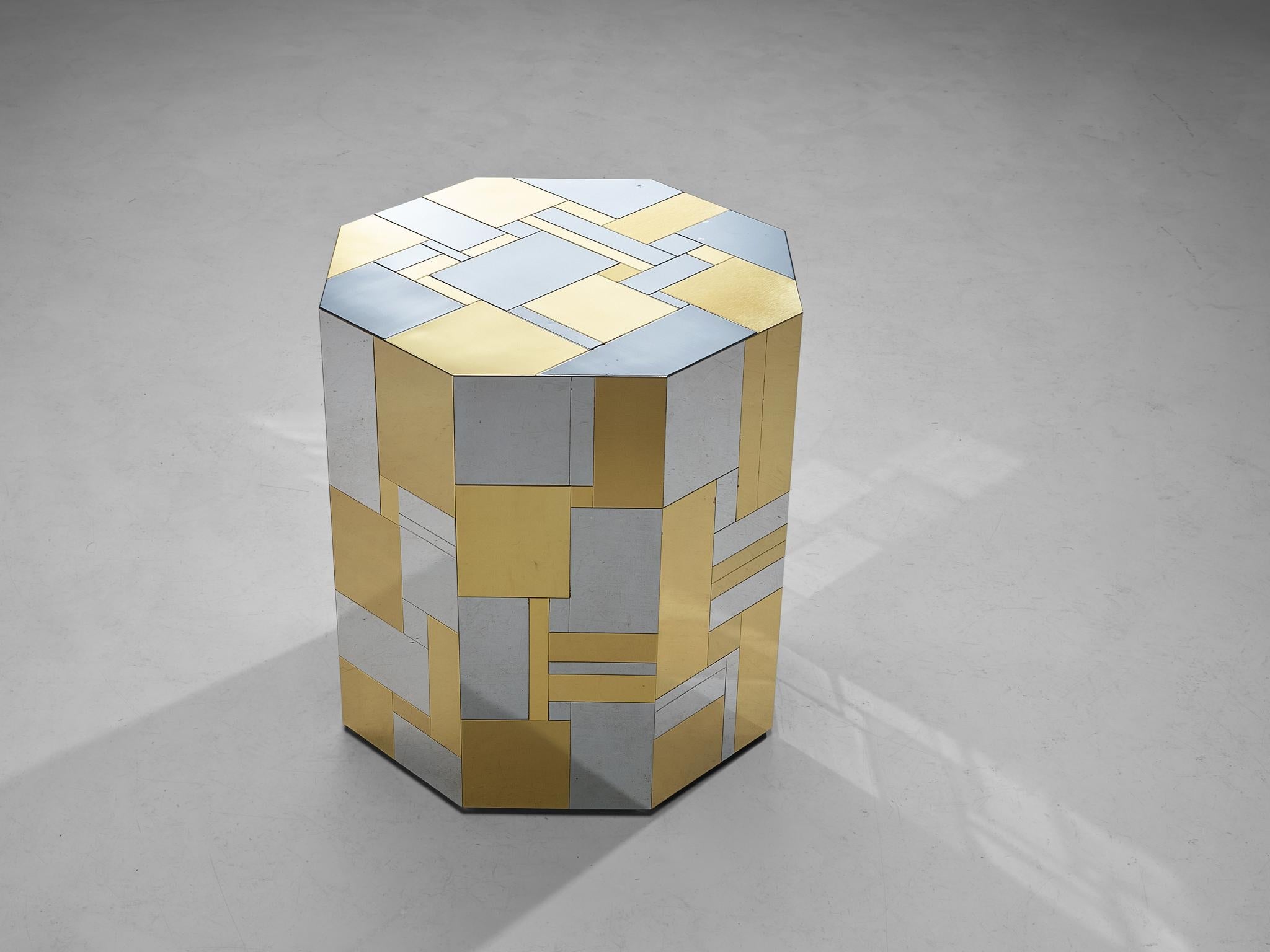
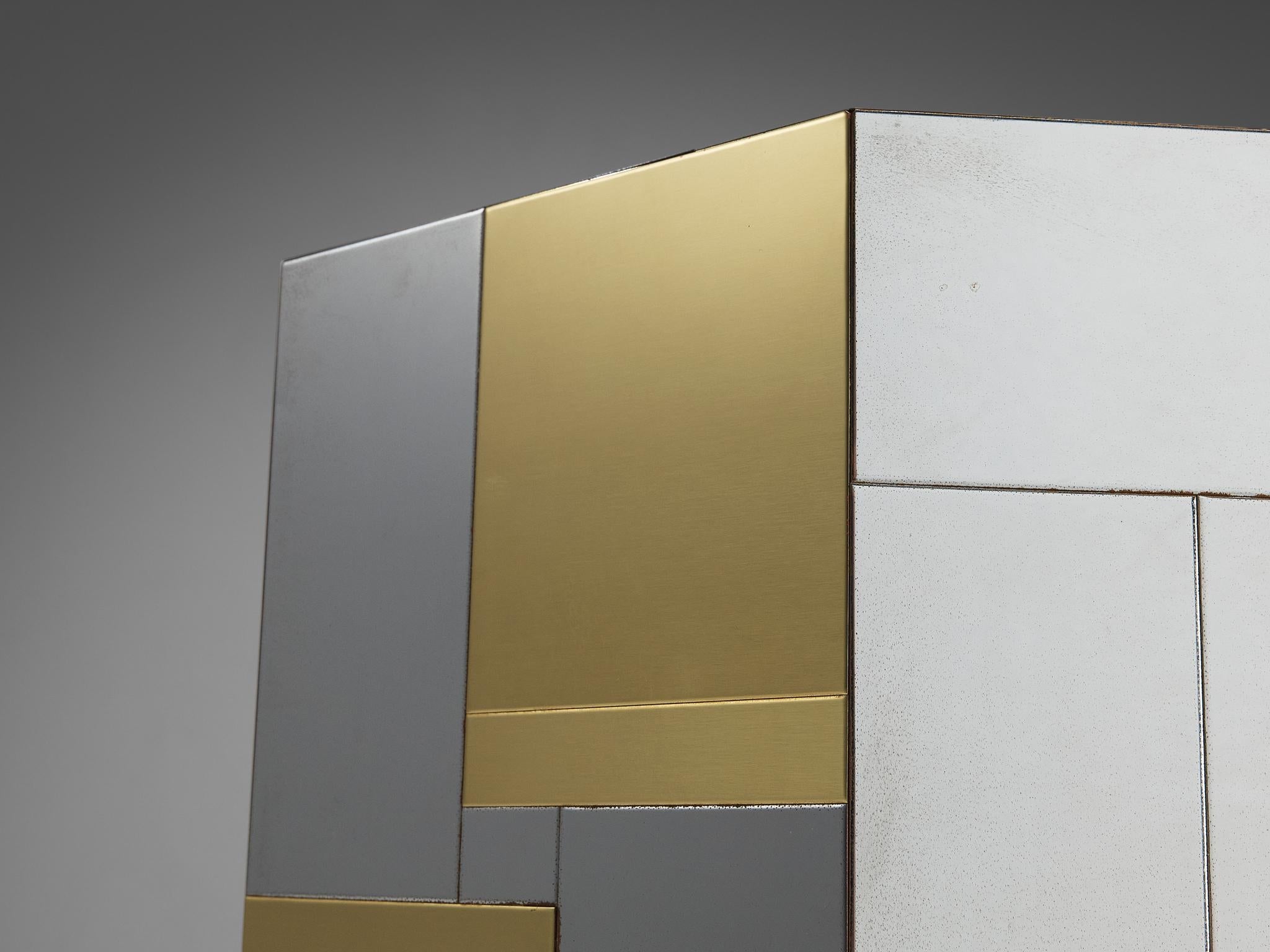
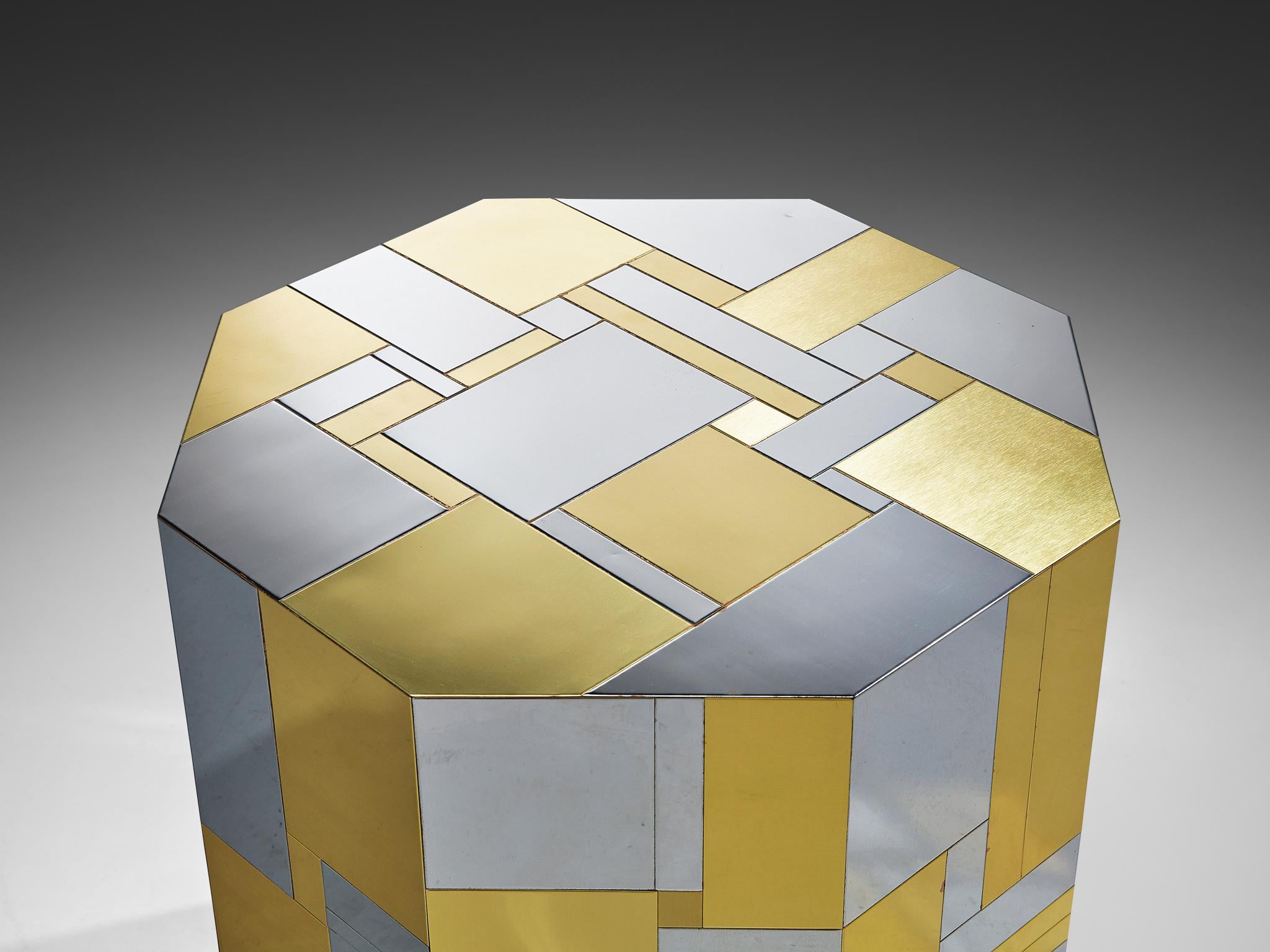
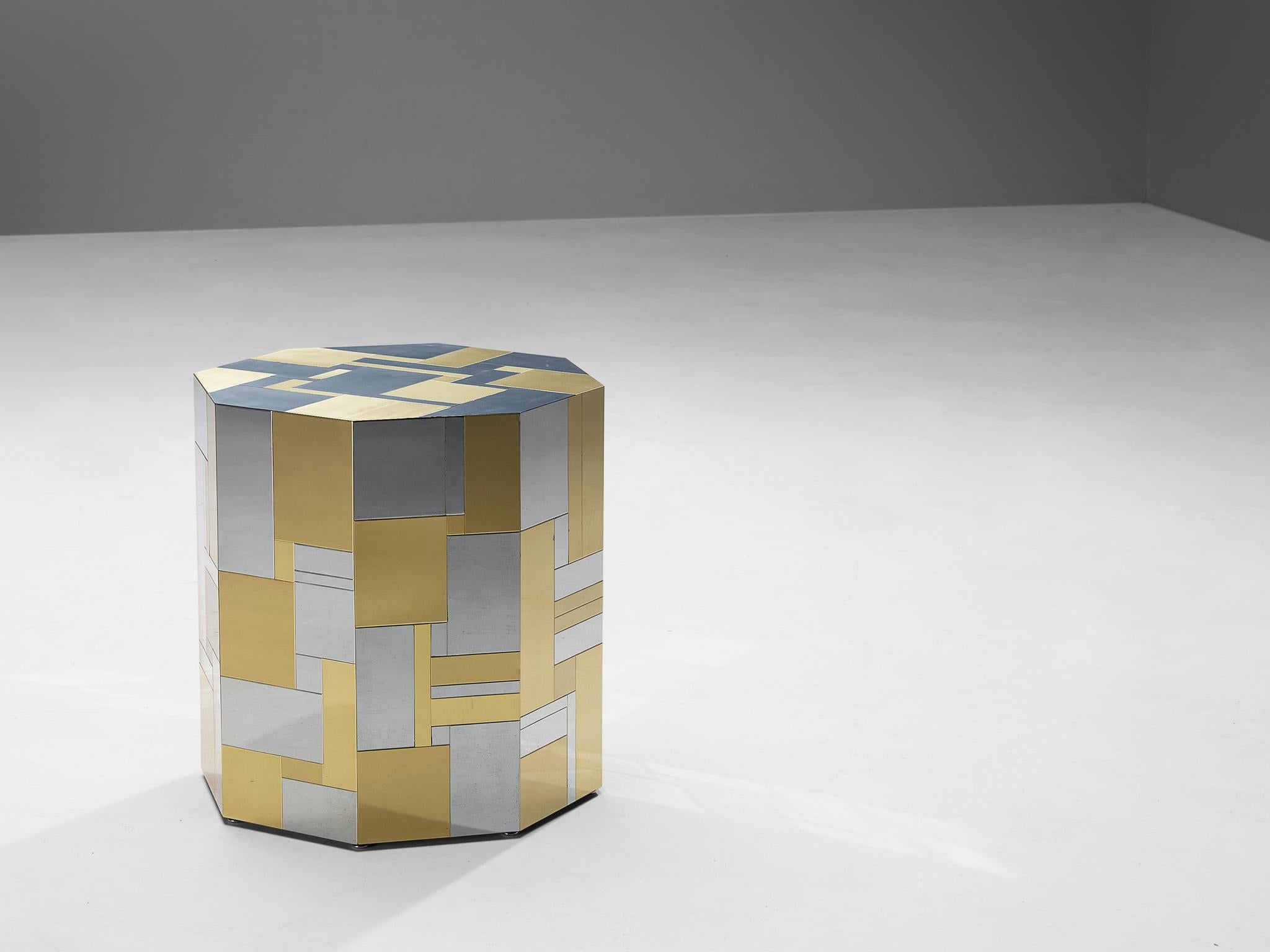
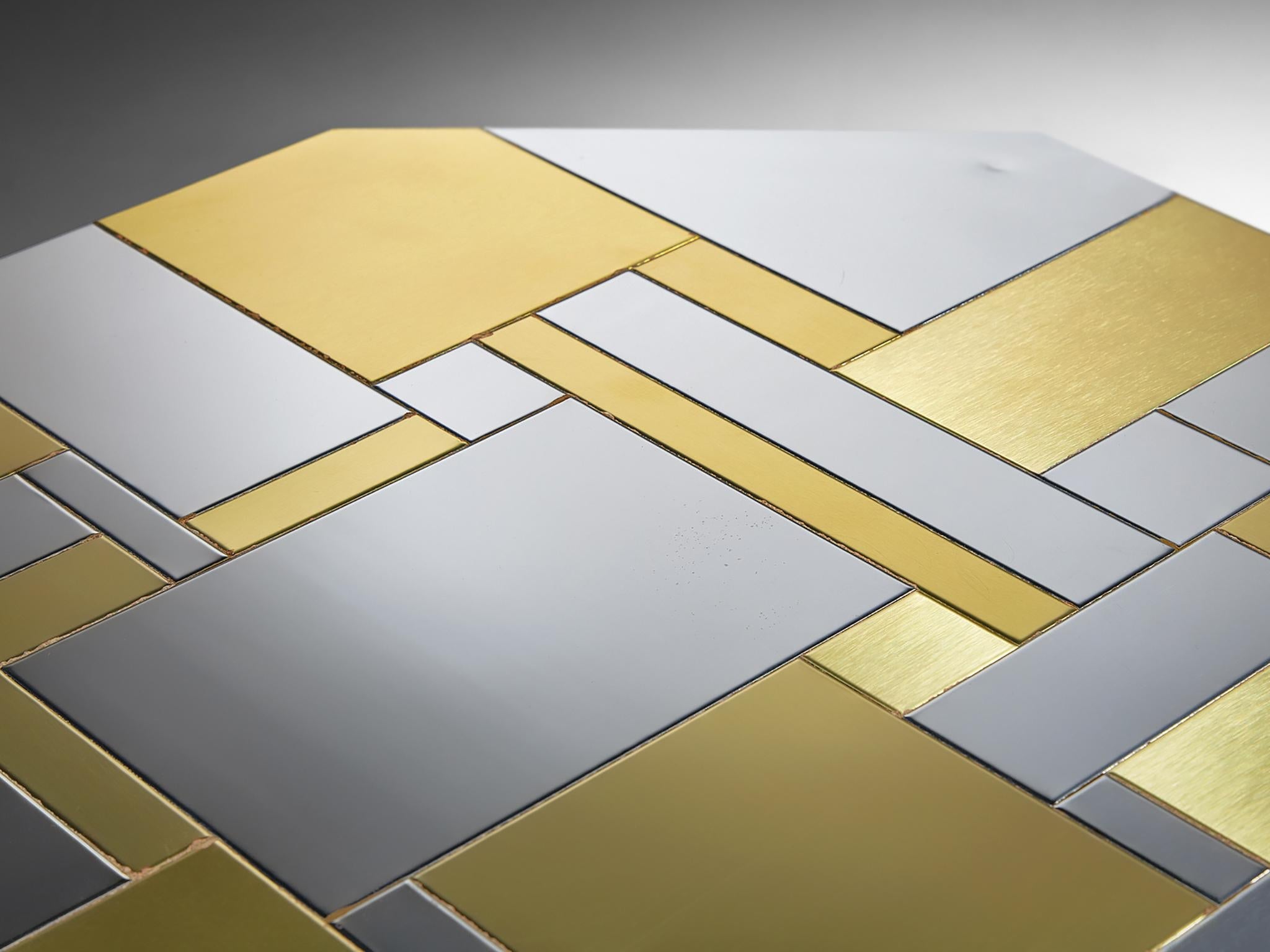
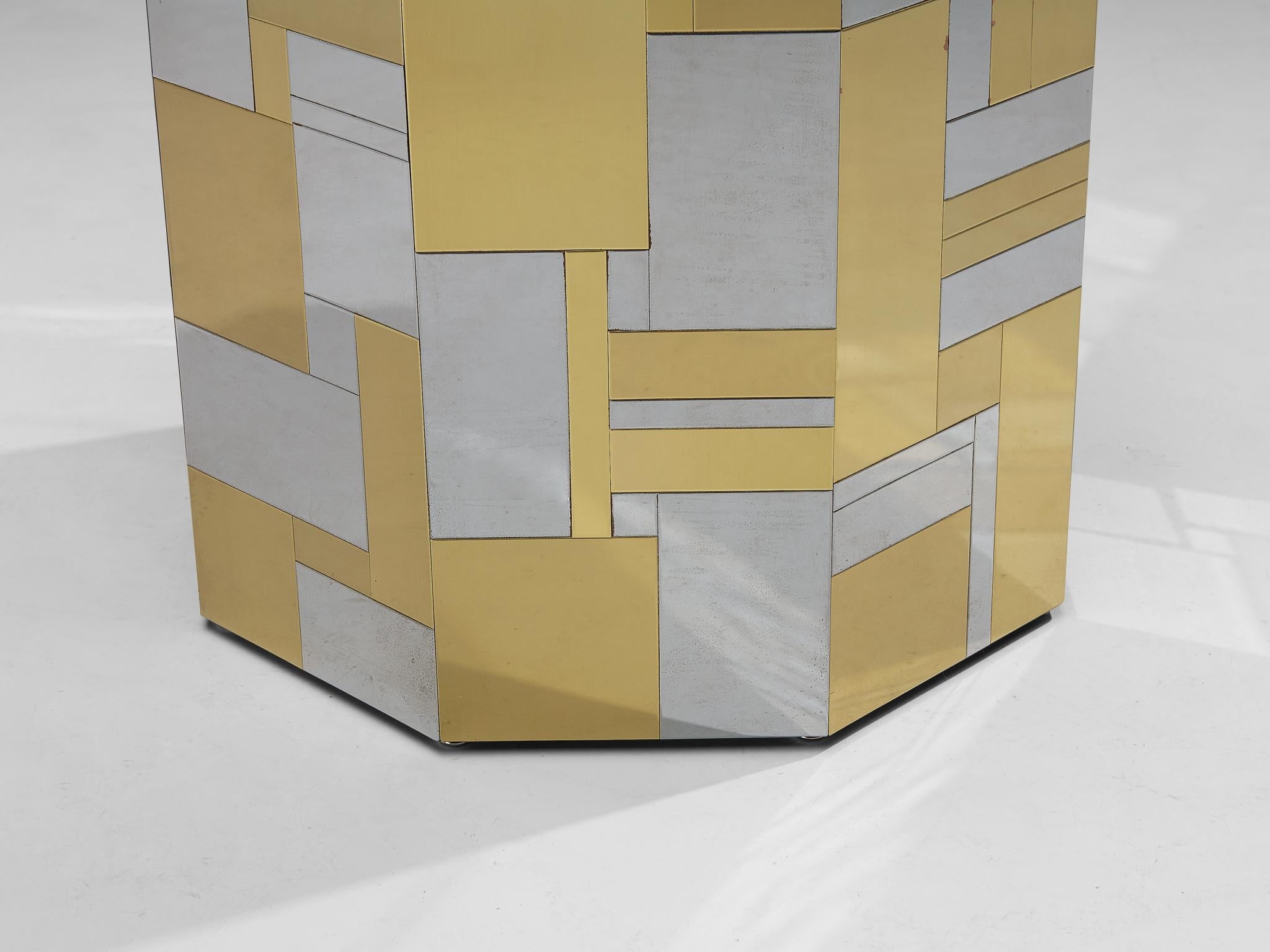
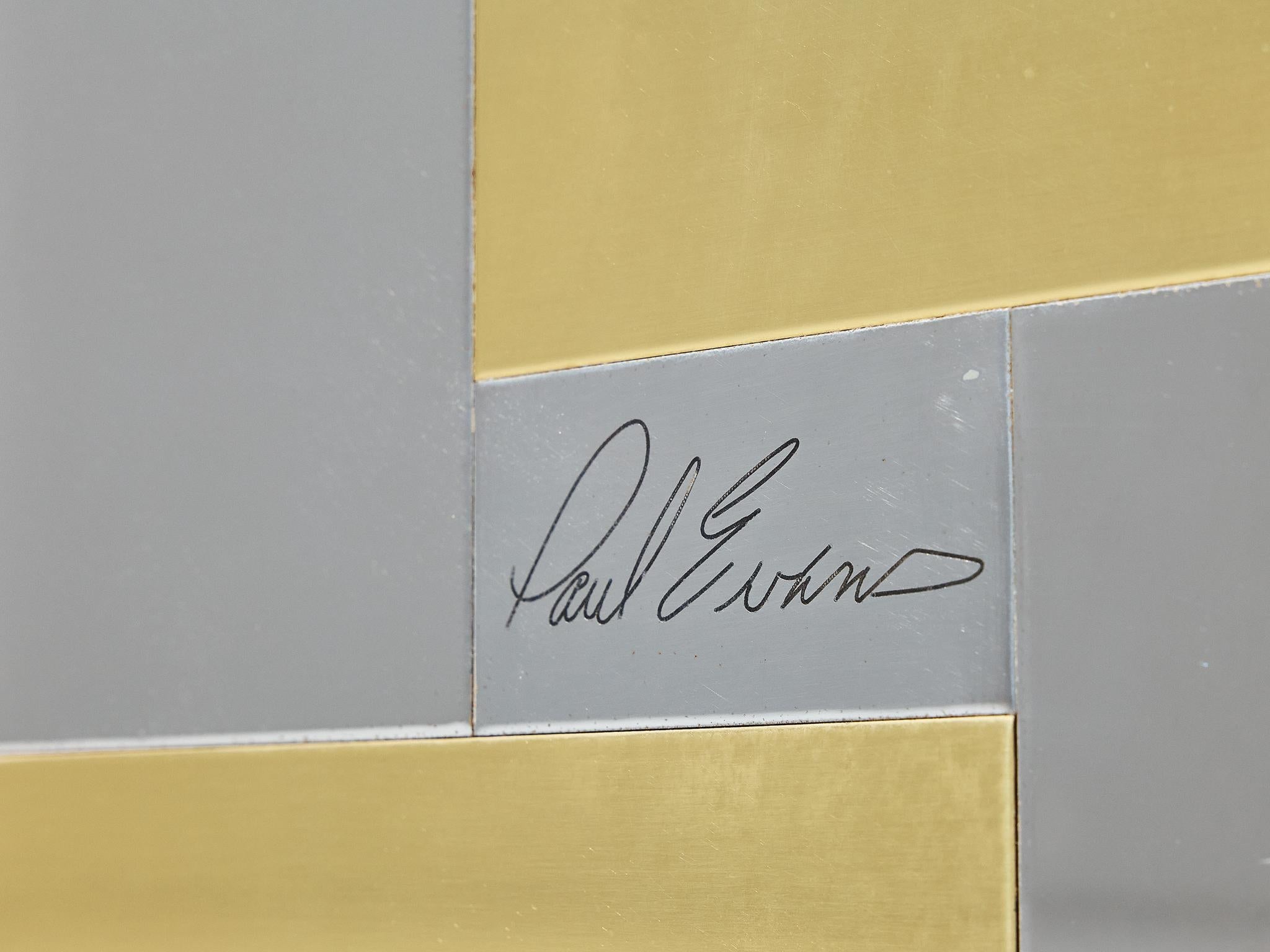
Paul Evans for Directional 'Cityscape' PE200 Side Table in Chrome and Brass
Paul Evans for Directional, 'Cityscape' side table, from the PE200 series, chrome-plated steel, brass, United States, circa 1975
This side table from the 'Cityscape' (PE 200) line is designed by Paul Evans for Directional, circa 1975. The “Cityscape” pieces became one of the most successful and admired designs of Paul Evans, as they have a luxurious, modern look thanks to its choice of materials. The PE 200 series is particularly known for its flat surfaces solely executed in chrome-plated steel (and brass). Geometry is at the forefront of this piece, expressed through clear lines and angular shapes. The construction is based on an octagonal shape, while the surface is covered with chrome-plated and brass sheets in an asymmetrical mosaic way. This defining contrast testifies to the postmodern design ideology. When light shines on the table, the surface leaves a shimmering and glowing effect that reminds of the glitz of the disco era.
The origin of Evans’ Cityscape series with its gleaming façades is based on the exploring of a material new to the Evans studio: chromed steel. The research and development for the series started in 1970 and took place over a six-month period. Before that, Evans had done a lot of preliminary examination by using a constructivist approach to design, which was, as art critic Glenn Adamson puts it, ‘based on the repetition and variation of geometrical modules, typically built from discrete metal plates, welded together and then embellished.’ As the handling of the material required a lot of technical competence and precision, Evans was faced with a great challenge during this period. Not only the visual characteristics of the material carries a sense of deluxe, but also Evans’ great craftsmanship and creativity give the potential that the Cityscape furniture could be considered as refined and exceptional. Evans himself described the series as ‘an elegant and unconventional statement, the ultimate in high fashion contemporary furniture.’.
Although Evans had a background in metalwork, the Cityscape series seems equally relevant to the Art Deco period of the 1920s and ‘30s. Evans was among others strongly inspired by the Viennese Art Deco designer Paul Frankl (1886-1958) who is known for his designs that resemble the New York architectural skyscrapers. As the title “Cityscape” suggests, the mirrored surface of the sideboards graphically represents a skyline. Other shapes within the series were also present resulting in a more general sphere of urbanity. Another source of inspiration could be the compositions prevailing within black-and-white movies of the Art Deco era, which played a major in the stylistic features of the art movement. Hollywood set designers used the juxtaposition of different kind of materials – mirrors, chromed steel, high-polish lacquer and silver-gilt wood – that contained a mirrored, sheen, and reflective finish, as means of creating these surfaces of high-contrast.
Paul Evans (1931-1987) was among one of the most important American Studio Craft Movement members. Together with artists such as Wharton Esherick and George Nakashima, he helped to make the Philadelphia region a prominent center for the Studio Craft in the late 1960s. Born in Newton, Pennsylvania, Evans studied at a few different institutions such as the Philadelphia Textile Institute, the Rochester Institute of Technology, School for American Craftsman, and the Cranbrook Academy of Art. Eventually, he was drawn to New Hope, Pennsylvania, in 1955 where he collaborated and shared a showroom with Phillip Lloyd Powell until 1966. Powell’s woodwork and Evans' metal craftsmanship combined into a creative partnership. During this period, he started to create furniture with metal and sculpture by which he manipulated materials to achieve expressive surface effects. In 1964, Evans started working for the Directional Furniture company where he pursued a new phase of his career. Directional offered him new opportunities for selling his work throughout the US and he continuously introduced new lines. However, his line proved to be too expensive and by the end of the seventies, he ended his relationship with the company. It was also throughout the seventies that Evans started to replace these crusty, textured surfaced, that were patinated with paint and acid, with dazzling, reflective metal surfaces that were sometimes mixed with woods. Evans’ oeuvre has an impressive size especially when regarding all pieces were handmade. On March 6, 1987, the artist shut down his business and, unfortunately, died the next day due to a heart attack.
Kindly note that the item is in good, used condition with signs of age and use. For further details, we encourage you to reach out to our team of design specialists.
VAT within the EU: When buying or delivering an item within the EU, VAT usually applies and will be added.
Choose options









Product Details